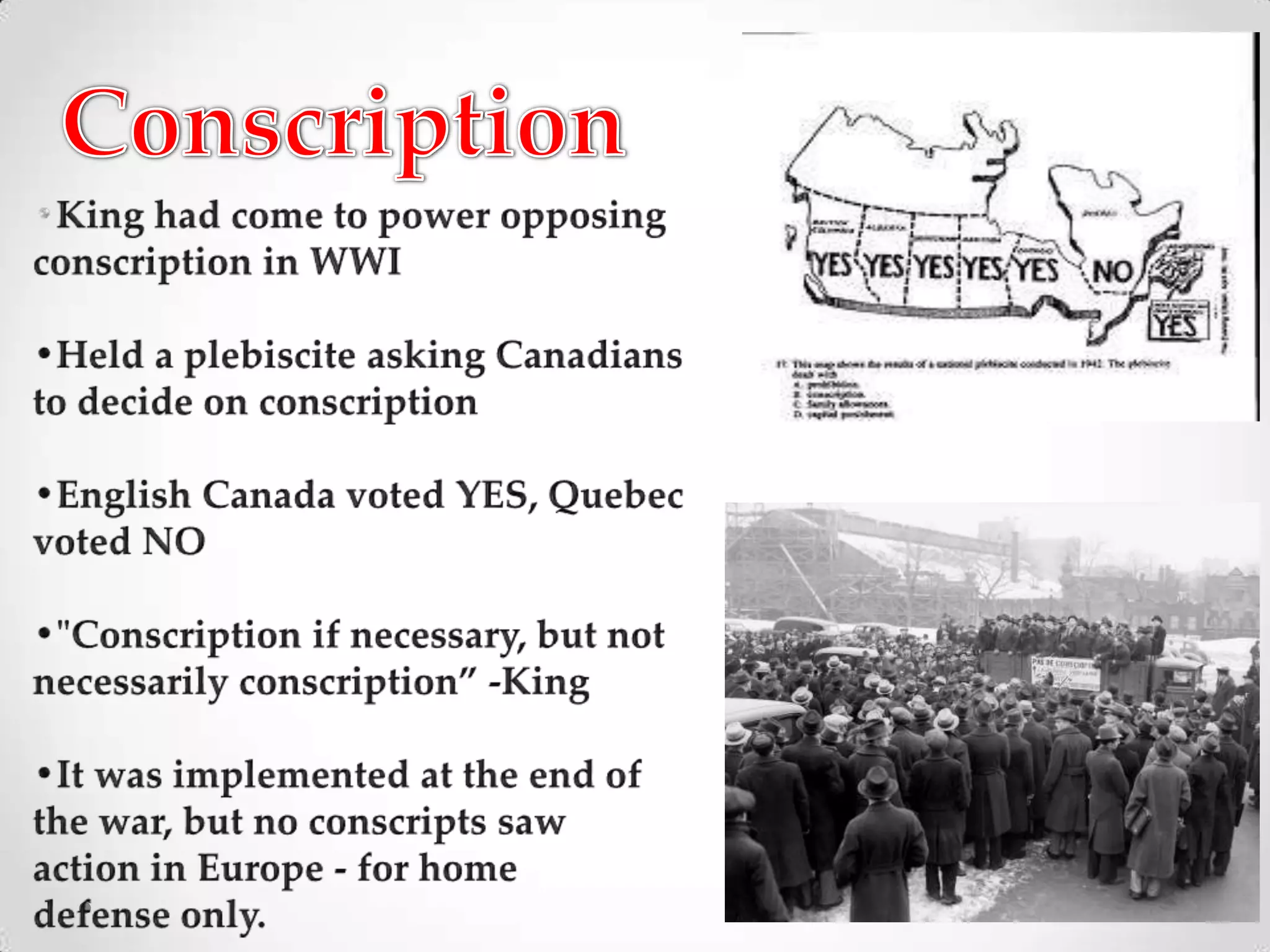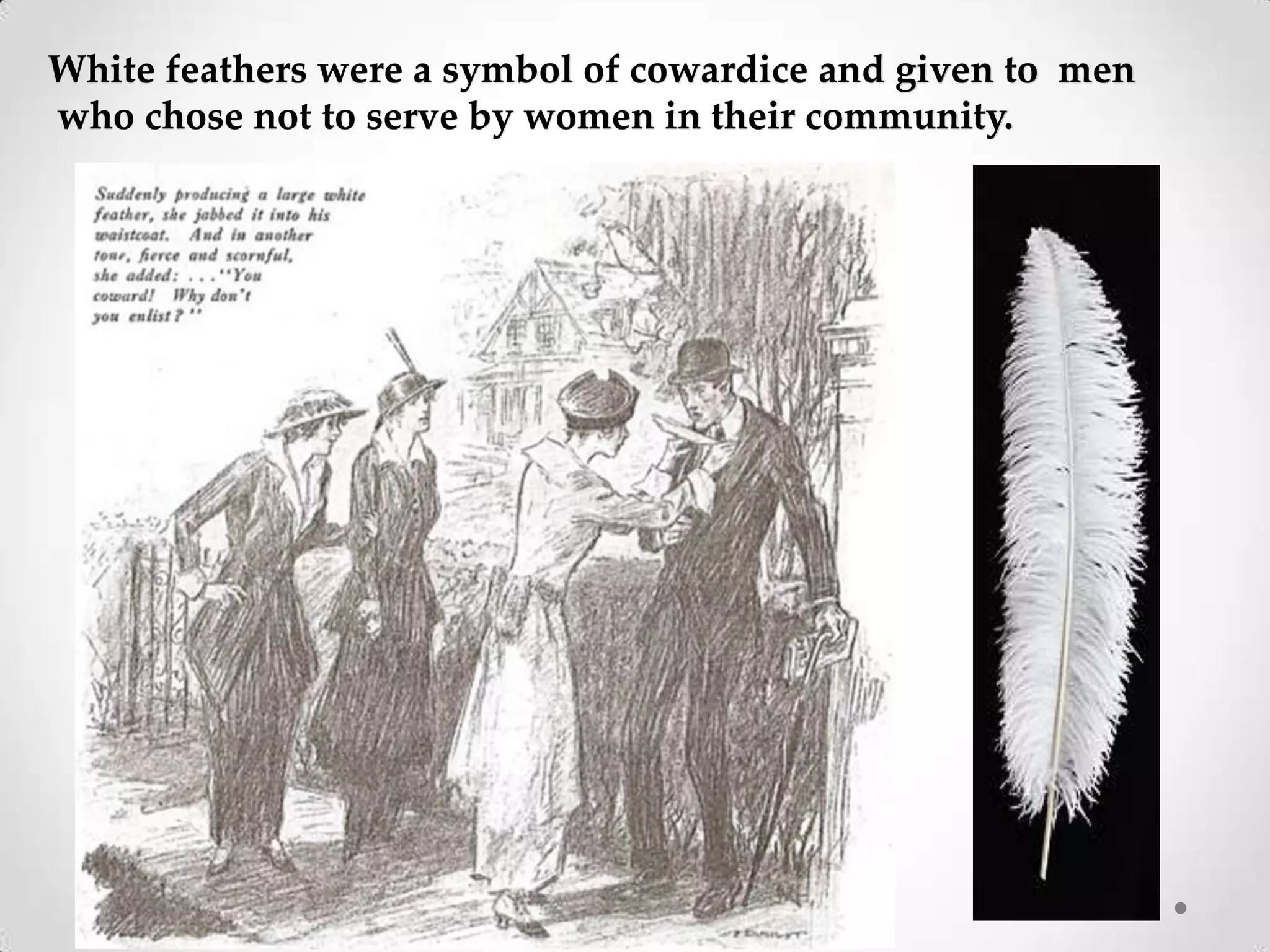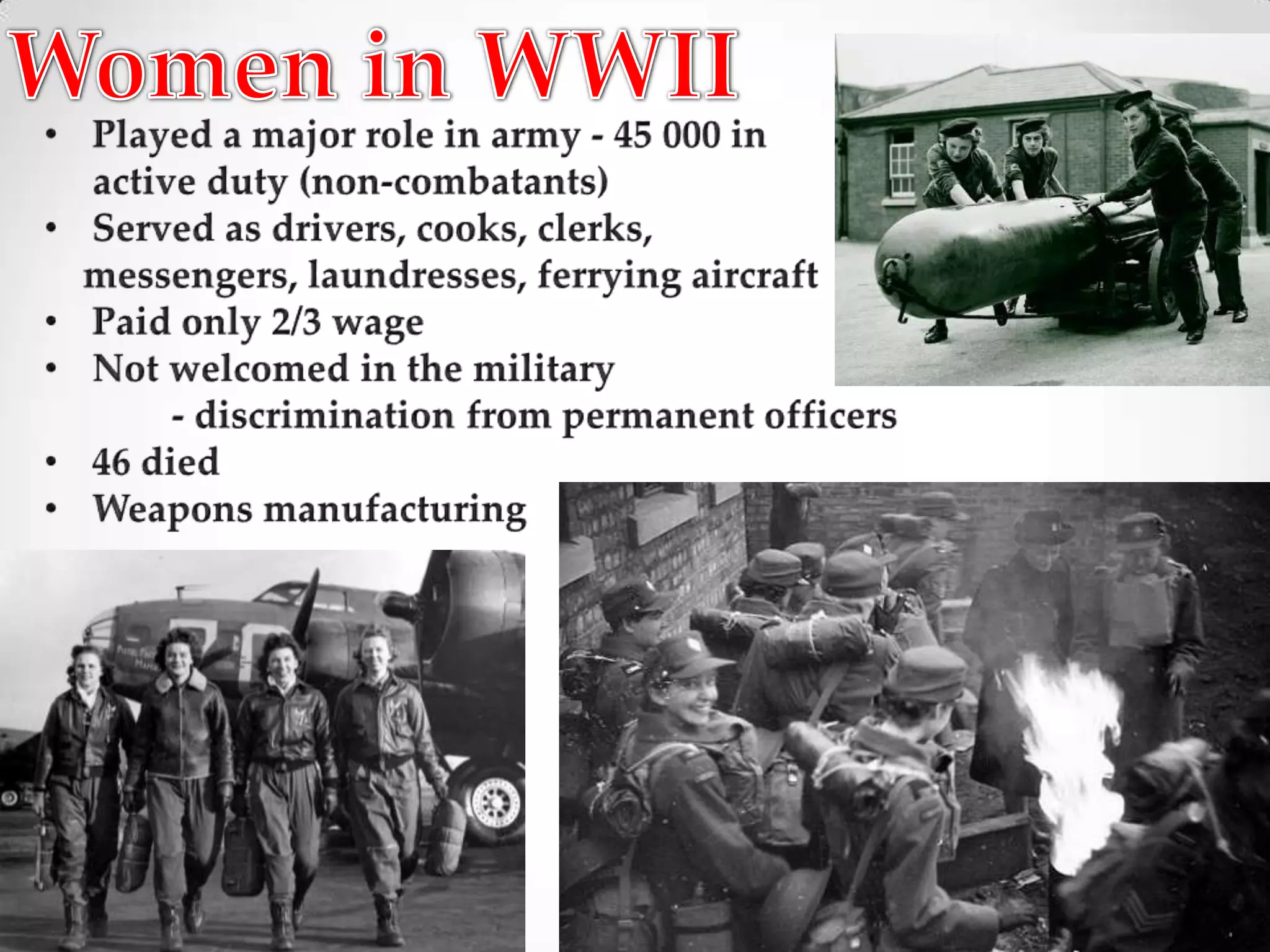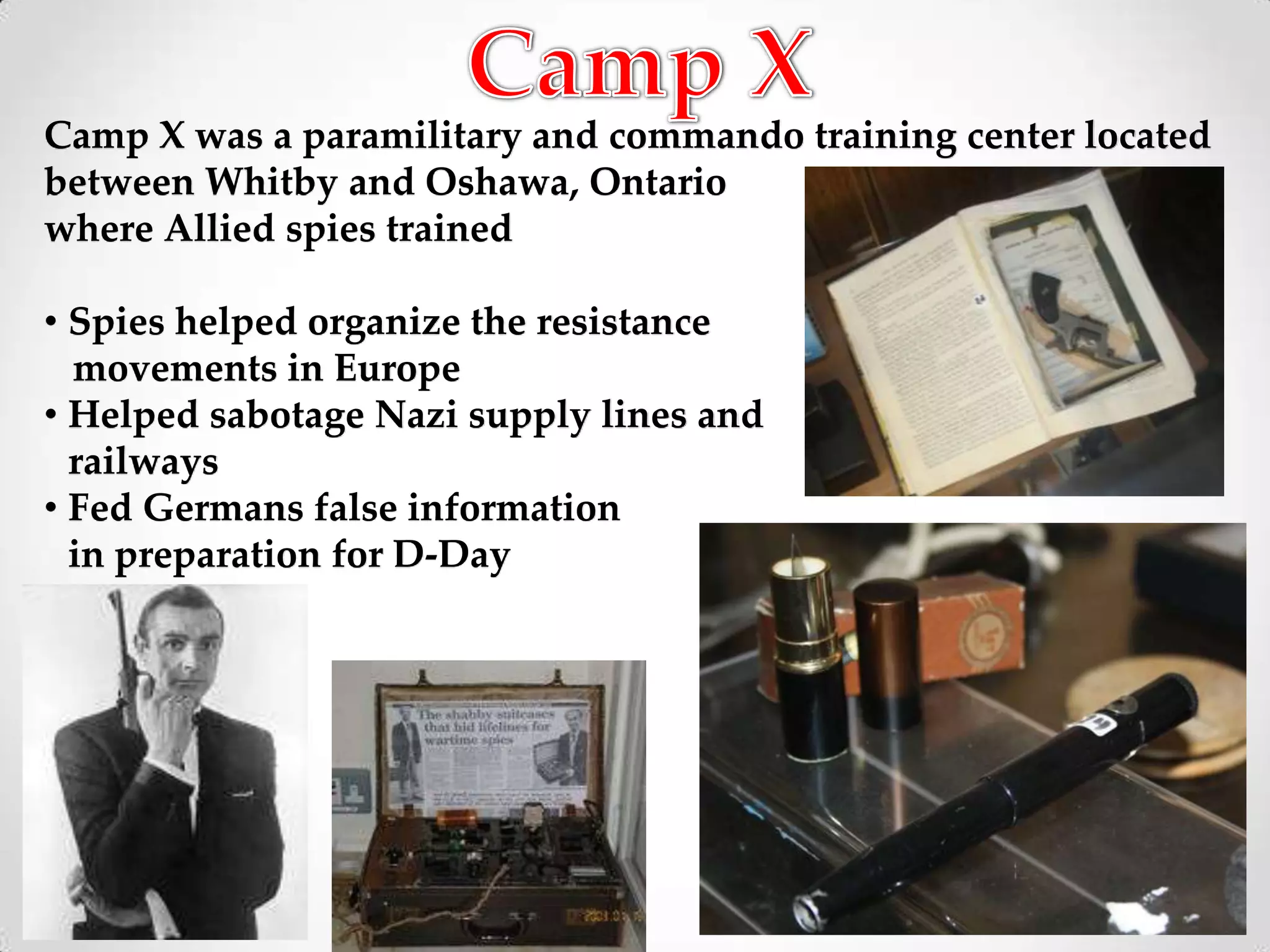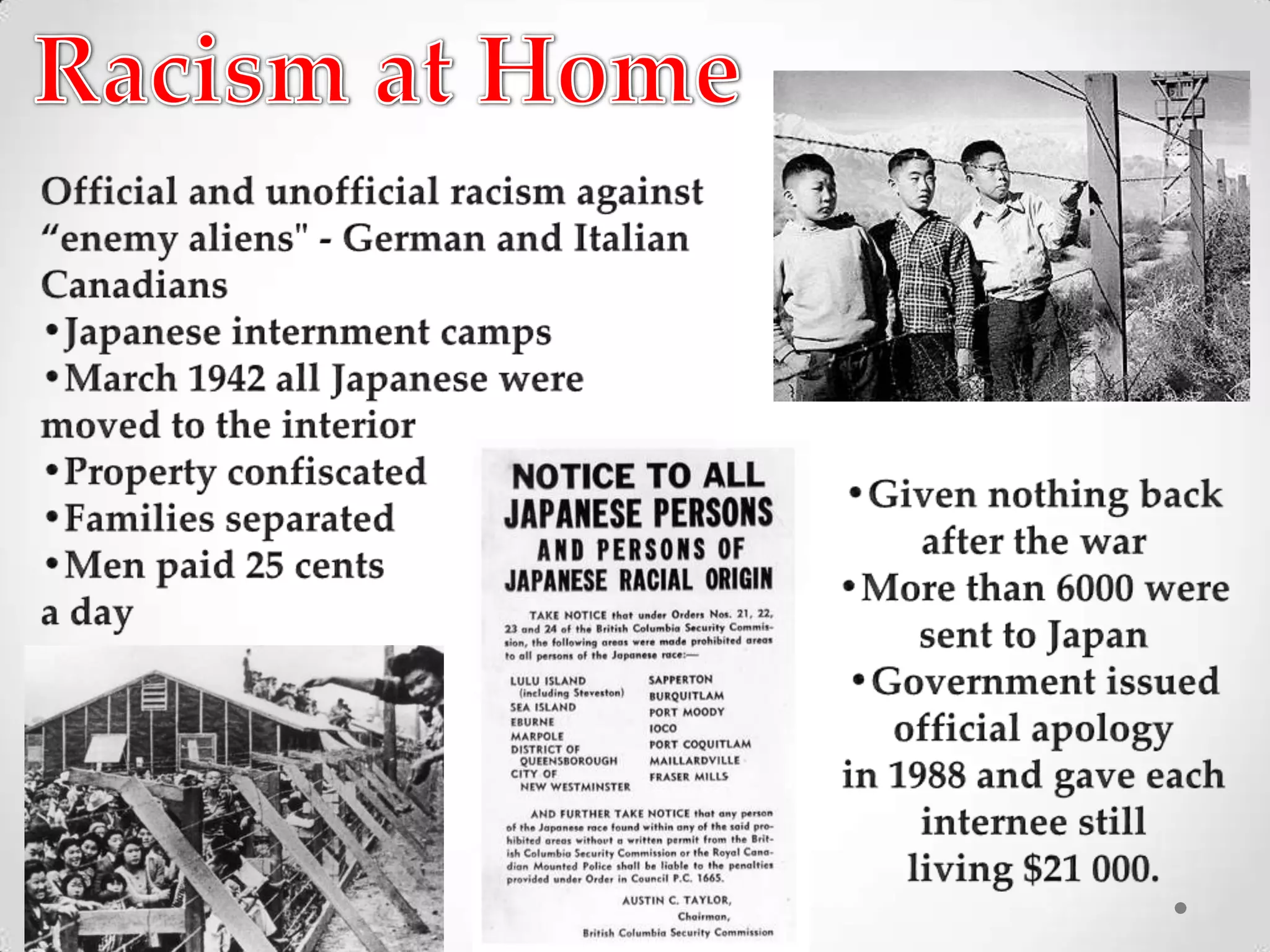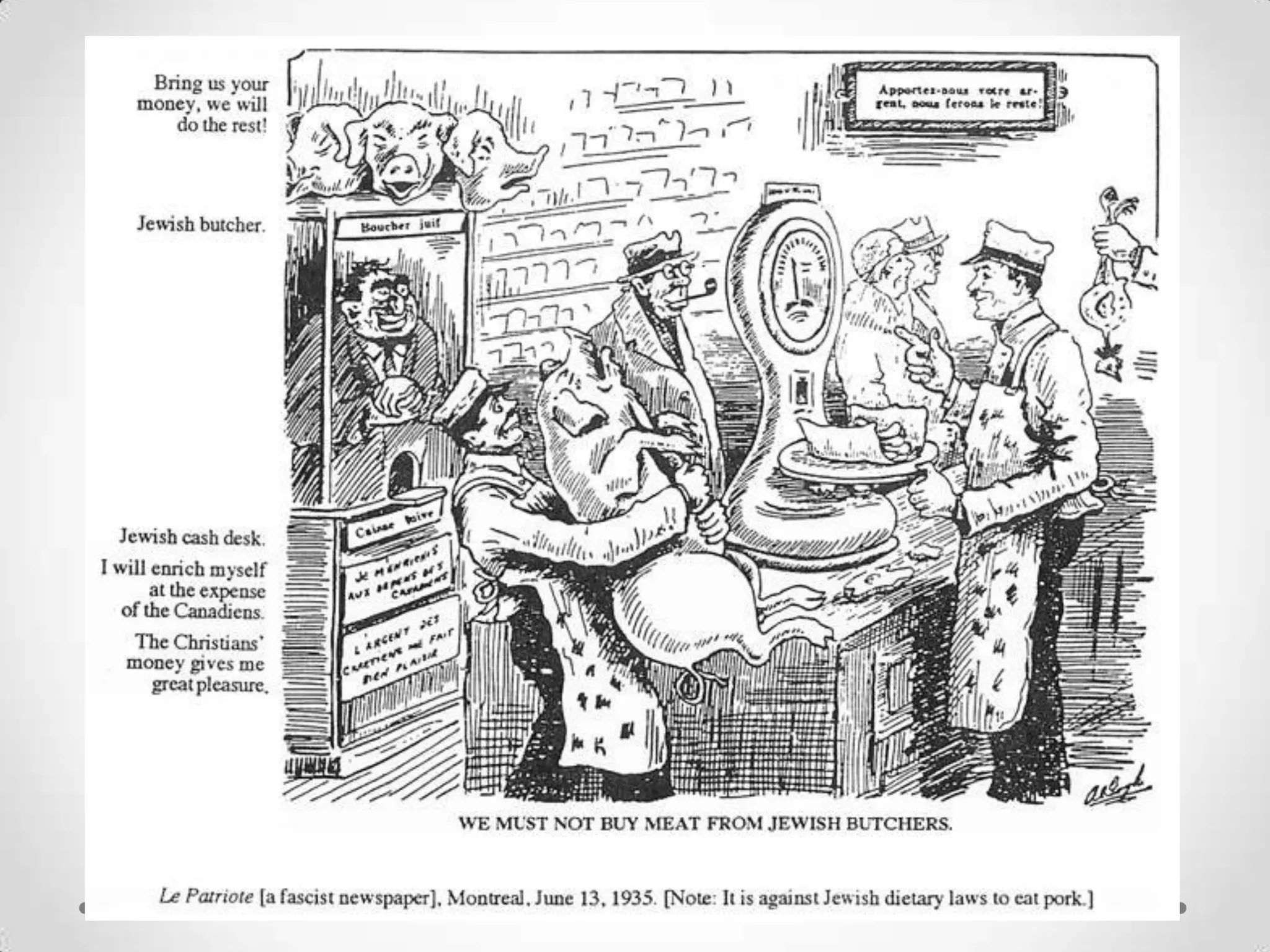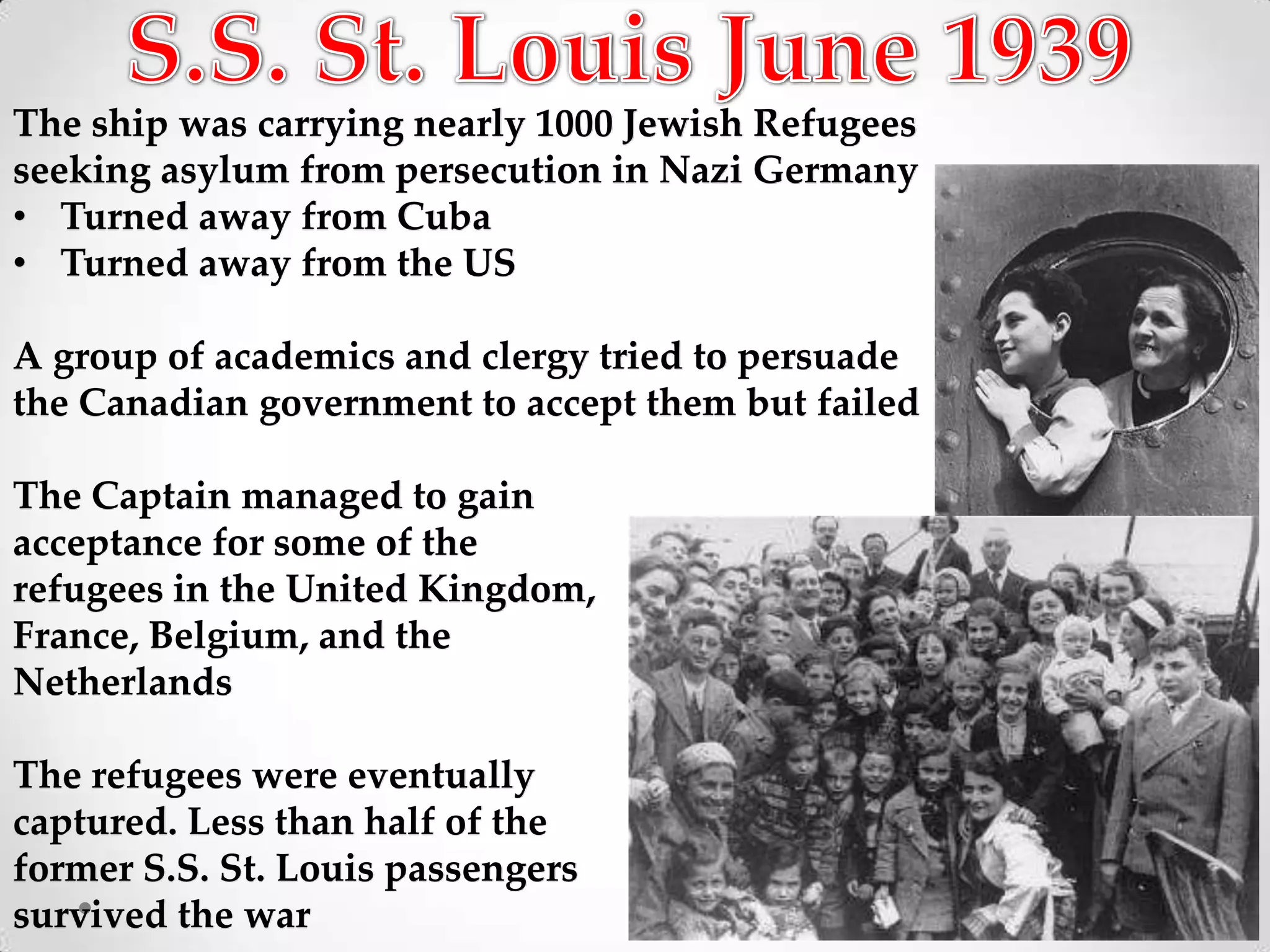Conscription was a divisive issue in Canada during World War II, passing over Quebec's opposition. Conscientious objectors contributed through non-combat roles. Women played important jobs on the home front and in weapons manufacturing but faced discrimination in the military. Japanese Canadians were interned in camps, and their property was confiscated, despite little security justification. Over 1000 Jewish refugees aboard the SS St. Louis were also turned away from Canada and other countries, with many later captured and killed in the Holocaust.

